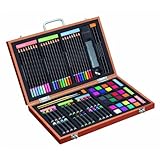Crayon Resist |
|||||||||||||||||||
resources index > lesson plans > CRAYON RESIST < art history |
|||||||||||||||||||
|
|||||||||||||||||||
|
|
|||||||||||||||||||
|
NPW home | Global PathMarker Collection | APWTW Blog | faqs-about | contact | search | privacy |
|
NetPosterWorks.com ©2007-2015 The Creative Process, LLC All Rights Reserved. |
last updated








